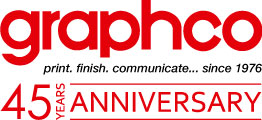The Latest Half-size (B2 Format) Presses in Digital and Offset
Excerpt taken from:
Printing News on Feb. 1, 2016 By Mark Vruno
Sheetfed Offset, Too
Purchasing even a new B2 digital press can be cost-prohibitive for smaller print firms, in access of a $1-million investment for some models, warned Chris Manley, president of Graphco, the Cleveland-area equipment dealer that hawks both digital (MGI) and offset (RMGT/Ryobi) presses. “A lot of smaller-format [offset] presses are being sold,” Manley added, largely due to the shorter run lengths still prevalent throughout the industry.
And then there’s over-capacity, of course, which still plagues printers. The attrition rate for larger presses definitely is higher, Manley added, citing the equipment auction emails many of us receive regularly: “Probably 95 of 100 auctions have full-size, 40-inch machines” for sale, he observed.
- Less volume: If you are a “short-run printer,” turning increasingly more jobs but at fewer quantities, the smaller format size features faster makeready and uses less waste paper to get “up to color.”
- Flexibile job change-overs: With more jobs in the queue, changing sheet sizes is easier and quicker on a smaller printing press. Time is money in a short-run environment.
- Hourly rates are less: A lot of print service providers (PSPs) don’t have or want full-size equipment, and they never will, Manley said, because these owners and managers like being able to run a press with a single operator. Most full-size, 40-inch presses require twice the labor, or two operators.
From a paper-buying perspective, printers can run eight-page signatures on larger presses using 24×36 inch sheets, which is a standard stocking size, he continued. Being able to run six 8.5×11 inch pages in “three-quarter format” is a strong lure, Manley said.
About a year ago, commercial printer The Messenger Press Inc. installed a 24×31-inch Ryobi MHI 755XL GP perfecting press with aqueous coater at its Carthagena plant in northwestern Ohio. Mitch Kremer a 30-something COO working side by side with his father, Allan, made a conscious, total-cost-of-ownership decision not to move “up” to an eight-up machine, saying he did not want to have to buy a bigger plate-maker and a bigger cutter. The press is providing Messenger with significant increases in productivity and enhanced print quality as the Kremers grow their presence throughout Ohio and the Midwest.
“This will be our main production machine for short-run offset,” reported the younger Kremer, who joined the now 134-year-old firm seven years ago and became a VP in early 2012. “It will bring us into the next 10 to 15 years.” Messenger replaced a 2001 vintage six-color (2 over 4) sheetfed perfector from a different manufacturer.
Kremer traveled to RYOBI MHI customers in Cleveland and Cincinnati to observe similar perfector presses in action. “We saw the LED-UV feature on the press in Atlanta, too,” he recalled, in addition to chatting via phone with some East Coast plants. John Arnold, the technical service manager for Graphco, then “walked us through the design changes and improvements on our specific configuration.
“We’re a job shop,” Kremer continued, “so we will need to determine where best to put the work: on our MGI digital press or the new Ryobi. When we consider the final trim size and finishing requirements of a job, we find that it can be faster to run 2,000 on the RYOBI MHI 755 XLGP than on the digital press.” The bottom line, he said, is operating as efficiently and leanly as possible — no matter which output technology is used.
RYOBI MHI Graphic Technology Ltd. (RMGT) since has rebranded its Ryobi 750 G series, which prints a full 31-inch sheet and now is designated as the 790 model (the metric equivalent in millimeters). “The maximum sheet size is 23.83×31 inches, versus 29,” explained Manley. “The extra two inches fits in nicely with the packaging aspects of the machine,” he noted, adding that it is two inches wider than competing presses in that category (namely, Heidelberg and Komori’s).
The 790 series also is available with Ryobi’s RPC system that “can simultaneously change plates in under two minutes, even on a 10-color press,” according to Manley. It features a re-engineered, 55-inch color monitor mounted to the press console, giving “operators a much faster and more intuitive observation,” he reported. Cameras placed around the press monitor activity at the feeder, for example. On perfecting models, these cameras “peer inside the press at 15,000 sheets per hour,” Manley added. “The camera system backs up the previous 15 minutes of operation onto an internal hard drive, allowing for review, adjustments, and corrections.
You can read the full article here: http://ht.ly/XHc8e
